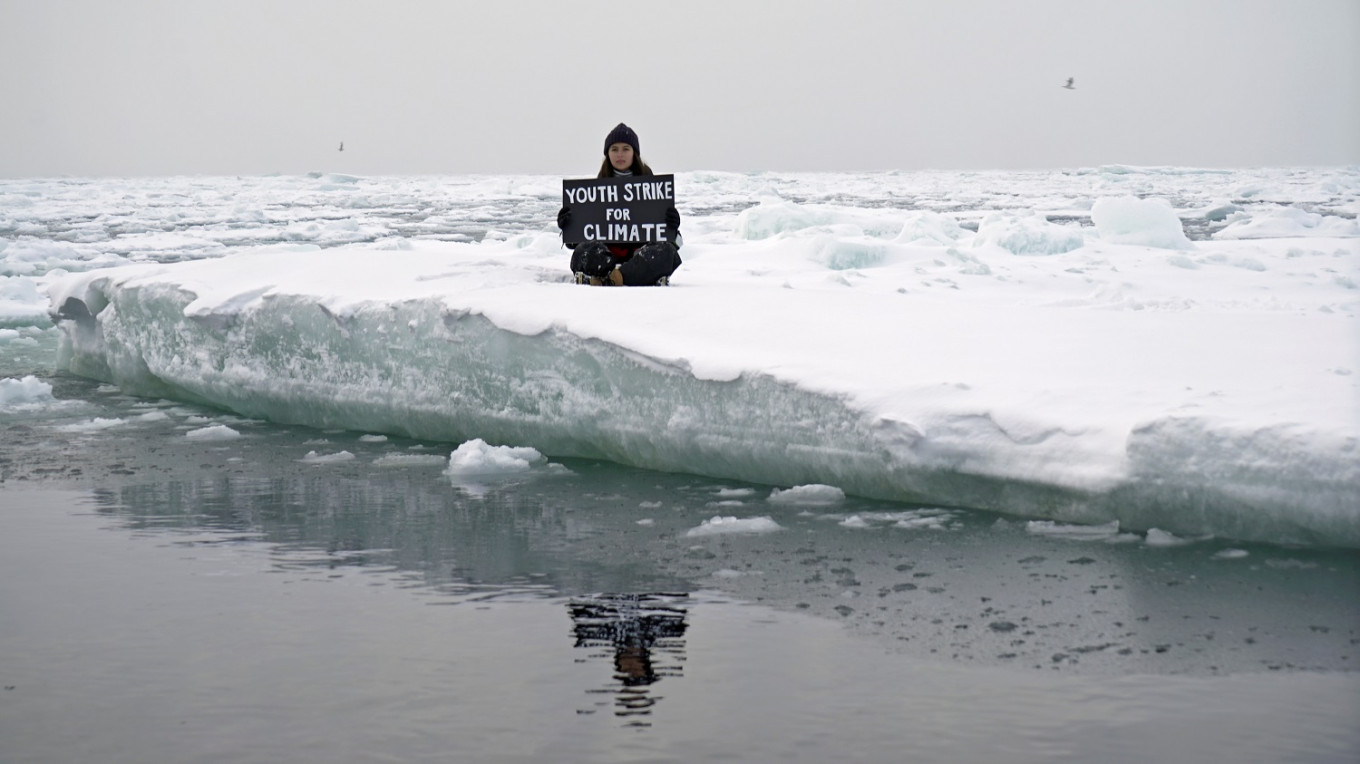Local youth and regional governments: Agents of change to reach low-carbon goals
A study conducted by the National Development Planning Agency (Bappenas) estimates that Indonesia needs to invest Rp 77 quadrillion (US$5.45 billion) to achieve its target of net-zero carbon emissions by 2060.
Change Size

D
id you know that the snakehead fish could save peatlands from fires? Or that using a deodorant made of natural ingredients could encourage forest conversion?
In the hands of young people, both of these things can happen. Interestingly, such innovations have come from local youths in some Indonesian districts.
The snakehead fish (Channa striata) naturally lives in rivers and bodies of fresh water in peatland areas, including in Siak regency, Riau. Siak has an area of 869,721 square kilometers, half of which is peatland.
Peatland fires are a chronic problem because of slash and burn agriculture and plantations. Dry peatland is highly flammable, whether set alight intentionally or accidentally. In 2015, there was a huge peatland fire in Siak. Since then, various restoration efforts have been made by the government and other stakeholders to improve the condition of peatlands and prevent fires from recurring.
Using peat canal blocks for snakehead fish farming is a brilliant idea because it will maintain the water level and the peatlands will remain wet. Communities that cultivate snakehead fish in canals will be encouraged to protect peatlands.
Siak youths founded a start-up called Alam Siak Lestari, which processes snakehead fish meat into albumin extract. Indonesian people traditionally use albumin to heal circumcision wounds and childbearing wounds. The potential of albumin as a raw material for pharmaceutical and beauty products on the global market is quite promising. In 2020, the market value stood at US$4.5 million and is expected to reach $6.7 million by 2026.
A sustainable business model innovation called Healthy Ecosystem Alternative Livelihood (HEAL) Fisheries won the Massachusetts Institute of Technology (MIT) SOLVE Challenge 2021 competition for the resilient ecosystem category last September.
Of the 1,800 registrants from 128 countries, Alam Siak Lestari was the only representative from Indonesia who managed to reach the finals of MIT SOLVE and receive the General Motors Award.
Similarly, young people from Sintang regency in West Kalimantan have developed health and beauty products made from natural ingredients, one of which is Tengkawang deodorant. This health product had won the hearts of consumers who like natural ingredients through online marketing, especially millennials in big cities.
As the name implies, tengkawang deodorant uses vegetable fat as its base material, from the seeds of the tengkawang tree, known as meranti merah (Borneo tallow nuts). The fat derived from these nuts has been used for generations by the Dayak tribes. The tengkawang tree is considered of high conservation value, one of the essential indicators for forest conversion.
Sintang is home to 1.2 million hectares of forest, prone to conversion to monoculture such as oil palm plantations.
The participation of young people in the prevention of deforestation and forest and land fires, which are among the most significant contributors to greenhouse gas emissions, has not come from nowhere. Several circumstances have allowed changes in thinking and action. Siak and Sintang are members of Lingkar Temu Kabupaten Lestari (LTKL), a sustainable development caucus of the Association of Indonesian Regional Governments (APKASI) that was founded in 2017. This caucus was formed shortly after President Joko “Jokowi” Widodo issued Presidential Regulation (Perpres) No. 59/2017 on measures to accomplish the Sustainable Development Goals (SDGs).
The vision of realizing sustainable development has taken shape in the adoption of the principles of low carbon development (LCD) and a nature-based green economy into the Regional Medium-Term Development Plan.
The nine LTKL member districts spread across six provinces have 5.8 million hectares of forest and 1.8 million hectares of peatland. The group promotes cooperation among all parties, including state and non-state actors, to protect nature while enabling the community to prosper. This might sound like an impossible mission. However, there have been many promising developments on the ground, as shown by Siak and Sintang, pioneers of the green economy concept. They explored local potential to find business models that processed natural ingredients into value-added products.
Imagine if young people in other regencies across the country were encouraged to do the same. They could become agents of change in achieving LCD goals. The question is how and whether it is easy to replicate existing practices.
A study conducted by the National Development Planning Agency (Bappenas) estimates that Indonesia needs to invest Rp 77 quadrillion (US$5.45 billion) to achieve its target of net-zero carbon emissions by 2060. It also concluded that economic transformation through low-carbon development would require adequate regulatory and institutional support and a financing framework. Green industries and sustainable land restoration policies are included in the LCD priorities.
There are at least three enabling conditions to encourage similar initiatives.
The first is increasing regional capacity in terms of policies, proper development planning, multi-stakeholder institutions and joint action. In 2020, the Monitoring Committee for the Implementation of Regional Autonomy (KPPOD) conducted a study on regional competitiveness. One recommendation was that innovation based on sustainable principles should be a priority for regions rich in natural resources as the foundation of their economy.
The second is promoting incentives from public and private institutions, in addition to incentives provided by the central government through ecologically based budget transfers.
The third is creating a network that enables knowledge sharing and transfer to happen.
***
The writer is a sustainability analyst.









